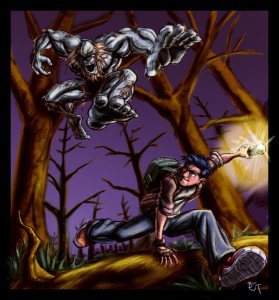Spy v. Spy Had it Right
A great villain is more than someone for your hero to defeat, and
describing your villain as big and bad isn’t enough. They have to
have motivations and attainable goals, just like the hero. So instead
of thinking in terms of a protagonist and an antagonist, imagine
your story as one where two (or more) characters have conflicting
goals. How do the aims of each IMPACT the other? How do each
REACT to the actions of the other? This banter between opposing
sides should drive the cause and effect structure of the narrative.
Often when writers get lost on where their story goes next, it
is because they are only thinking about what one side—normally
the hero—should do. When plotting out a scene, a short story, or
even a novel, imagine yourself playing chess alone. Move your
first piece with a bit of action, then immediately turn the board
around and play from the other side. Ask yourself what move
this side would make in reaction, then flip the board around
again. Keep going in this fashion until there is a victor. Not all of
these moves have to be “visible” to the reader in the final story,
but knowing what they are and why they were made will help
tighten the narrative and add depth to those wicked doers out to
thwart your hero.






